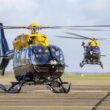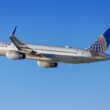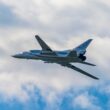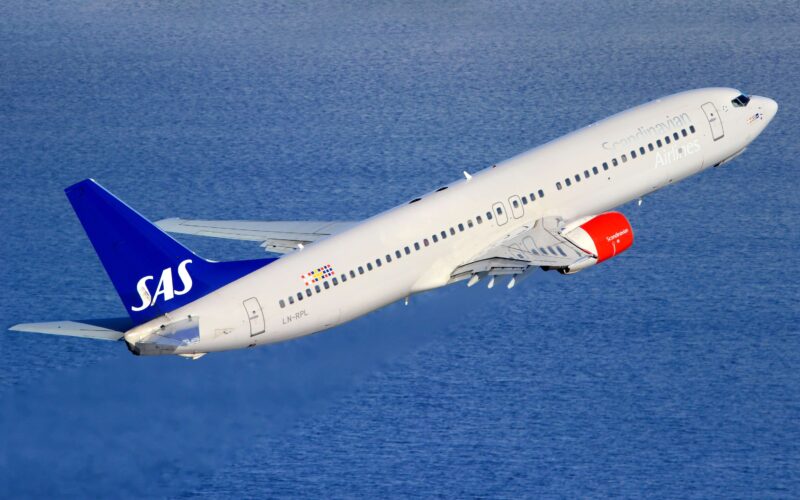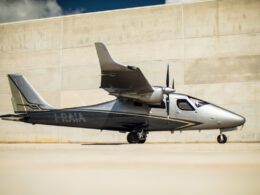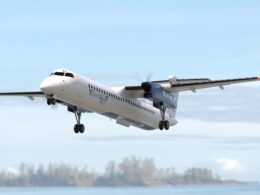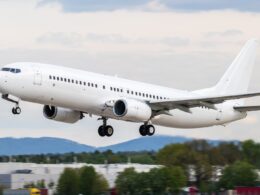The flag-carrier of Denmark, Norway, and Sweden – Scandinavian Airlines System just marked its 75th anniversary. AeroTime takes a look at the changes in SAS with regards to the COVID-19 pandemic that negatively impacted the aviation industry worldwide.
History in short: from the first intercontinental flight to restructuring
The air carrier was founded on August 1, 1946, when the three airlines – Svensk Interkontinental Lufttrafik, Det Danske Luftfartselskab, and Det Norske Luftfartselskap – formed a partnership to handle intercontinental air traffic.
On September 17, 1946, SAS started operation under its new entity. The first intercontinental flight was conducted from Stockholm Arlanda Airport (ARL) and touched down at New York’s LaGuardia Airport (LGA). SAS flew on the brand new DC-4 aircraft, named Dan Viking. Pilot Byron S. Cramblet was sitting in the cockpit.
August 1st marks our 75th anniversary. Thank you, for traveling with us for 75 years! We are looking forward to welcoming you on board our flights today, tomorrow and for many more years to come. #flysas #SAS75 #wearetravelers pic.twitter.com/4S87OJX0X1
— SAS – Scandinavian Airlines (@SAS) August 1, 2021
“Scandinavia would not be the same today without a strong Scandinavian airline, and we will naturally continue to play an integral role in Scandinavian infrastructure also in the future,” read the SAS statement released on August 1, 2021.
In 1954, the airline operated the world’s first-ever scheduled flight using the polar route. Since then, a lot has changed. The largest Nordic airline group has had its ups and downs. However, to this day, the airline remains a leading player in the Scandinavian region.
In 1981, Scandinavian Airlines Jan Carlzon was appointed as chief executive officer of SAS. During his tenure, the Scandinavian airline group saw a successful financial turnaround with a net income totaling 448 million Swedish crowns ($52 million) before allocations and taxes for the financial year ending September 30, 1982. In comparison, SAS had a loss of 109 million Swedish crowns ($13 million) in the financial year of 1980/1981. In 1982, SAS was recognized as the most punctual airline operating in Europe at that time. The 1980s were relatively successful for Scandinavian Airlines, as the air carrier gradually acquired control of the domestic market in all three Nordic countries.
During the early 1990s, SAS tried to merge itself with the Dutch airline KLM, along with Austrian Airlines and Swissair, in a proposed merger called Alcazar. However, the idea of an ambitious combined entity ultimately collapsed, largely due to the changes in senior management.
With the growth of low-cost carriers in Europe and the global financial crisis, SAS experienced new financial hardships in 2009. The airline reported a net loss of 2.9 billion Swedish crowns ($338 million). The financial losses and competitive pressure from other European airlines compelled the airline to start tackling its cost problem.
“Due to the deep recession that has affected the global economy since the beginning of the financial crisis, 2009 was probably the most challenging year ever for the airline industry as a whole,” read the SAS statement released in 2009. “SAS responded to the economic downturn with the launch of a renewed strategic approach – Core SAS.”
As part of the Core SAS restructuring process, the airline group divested its shareholdings in BMI, Estonian Air, regional carrier Skyways, Air Greenland. Adding to that, SAS Group sold its Spanair and airBaltic shares at the time. The airline laid off 2,900 people and retired 18 aircraft from active service.
After implementing Core SAS, the airline’s cost savings amounted to 7.6 billion Swedish crowns ($886 million), according to the airline’s annual report in 2011.
“Core SAS enabled us to reduce our cost level while advancing our customer position,” read the SAS statement released in 2011.
Current fleet and financial changes at SAS
At the height of the global pandemic, the global aviation sector experienced a collapse in international air travel demand. As flying operations became almost solely devoted to cargo and the skies fell quiet, almost all of the world’s airlines started reporting massive financial losses. Scandinavian Airlines was no exception.
On December 3, 2020, SAS Scandinavian Airlines reported a 10.2 billion Swedish crowns ($1.2 billion) loss before tax for the financial year from November 2019 to October 2020. In comparison, the company reported a profit of around 800 million Swedish crowns ($95 million) the year before.
According to the latest data, SAS continued to suffer a weak passenger demand in the second quarter of 2021. The airline narrowed a net loss to 2.4 billion Swedish crowns ($280 million), an improvement of 1.1 billion Swedish crowns ($128 million) compared to the Q2 2020.
The outlook for recovery remains dimmed, as the airline financial report of Q2 2021 stated that “the ongoing COVID-19 pandemic, with its accompanying uncertainties, makes it impossible to provide any guidance on the financial performance for the remainder of the fiscal year”.
In order to help SAS survive the crisis and tackle its costs, the European Commission (EC) approved Swedish and Danish aid measures of approximately €300 million ($357 million). The aid will take the form of loans (€150 million granted by Sweden and €150 million granted by Denmark) with subsidised interest rates, with a maturity of maximum five years.
Currently, SAS has a total of 132 aircraft in its fleet. Out of 132 aircraft in its fleet, 30 are parked due to the COVID-19 pandemic, as per Planespotters.net data. The largest part of the airline’s fleet consists of Airbus A320 family aircraft with 42 Airbus A320neos and 11 Airbus A320-200 aircraft and Boeing 737 family aircraft with 15 Boeing 737-700s and 12 Boeing 737-800s.
In 2018, SAS decided to order an additional 50 Airbus A320neo aircraft with deliveries until 2025. According to the information published on SAS webpage, the carrier has a plan to have 80 Airbus A320neo aircraft in service by 2025.
Adding to that, SAS started modernizing its long-haul fleet by adding new Airbus A350 XWB aircraft to its fleet. SAS took delivery of its first A350-900 in November 2019, and has a contract with Airbus to reach a total of eight A350-900s. Currently, SAS has a total of six Airbus A350s in its fleet, as per Planespotters.net data.
Moreover, SAS has an order for three new Airbus A321LR (Long Range) aircraft. The first aircraft is already delivered and expected to start operating in summer 2021. The two additional Airbus A321LR are planned to arrive during 2021.

